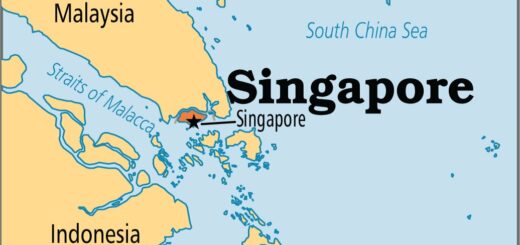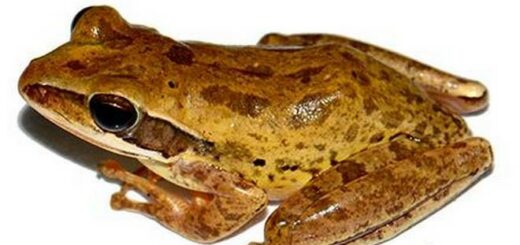National Current Affairs – UPSC/IAS Exams- 4th June 2019
Quadrilateral Security Dialogue
Topic: International Relations
In News: The Quadrilateral Security Dialogue also known as Quad is an informal strategic grouping consisting of India, US, Australia and Japan recently met in Bangkok in Thailand.
More on the Topic
- The meet in Bangkok was attended by senior officials of Quad (India, US, Japan and Australia).
- At the meet countries held consultations on their collective efforts for a free, open and inclusive Indo-Pacific region.
- The consultations also underscored Quad’s intention of continuing with close coordination and collaboration among themselves in support of sustainable, private sector-led development, maritime security of the region and of good governance.
- The Quad (or QSD) is committed to preserving and promoting the rules-based order in the Indo-Pacific region. At this meet they reaffirmed their shared commitment.
- The Quad call for an open Indo-Pacific region (which is a biogeographic region) is because China has been trying to expand its military presence in the Indo-Pacific.
- China claims almost all of the South China Sea (SCS) even though other countries of same region viz. Vietnam, Philippines, Malaysia, Brunei and Taiwan have also countered China’s claims over it.
About QUAD Grouping and Its Importance:
- Quadrilateral Security Dialogue (QSD) is the strategic dialogue between four countries viz. India, United States, Japan and Australia.
- The quadrilateral comes in the backdrop of growing Chinese assertiveness in the South China Sea.
- It has also raised concerns regarding freedom of trade and navigation through the waters of the south and East China seas.
- Single Navy of any country can’t provide security in vast oceans. The combination of QUAD navies can ensure security in the region.
- It will provide safety to international maritime trade routes like Mallaca strait.
- It will also increase connectivity in the Indonesian Pacific region and provide economic opportunity.
Source: The Hindu
Islamic Cooperation countries (OIC)
Topic: International Organisations
In News: The 14th summit of the Organisation of Islamic Cooperation (OIC) was held in Mecca, Saudi Arabia.
More on the Topic:
- The OIC describes itself as “the collective voice of the Muslim world”.Its objective is to safeguard and protect the interests of the Muslim world.
- It is the 2nd largest inter-governmental organisation in the world after the UN, with a membership of 57 states in 4 continents.
- It has reserved its membership for Muslim-majority countries.Russia, Thailand, and couple of other small countries have Observer status.
- India is neither a member nor an observer.
What IS OIC’s stance on J&K issue:
- The OIC has been generally supportive of Pakistan’s stand on Kashmir.
- It has earlier even issued statements criticising the alleged Indian “atrocities” in the state.
- The 2017 session of Council of OIC Foreign Ministers had adopted a resolution reaffirming the unwavering support for the Kashmiri people in their just cause.
- Recently in December 2018 too, the OIC expressed strong condemnation of the killing of innocent Kashmiris by Indian forces in Indian-occupied Kashmir.
- It called upon the international community to play its role in order to reach a just and lasting solution to the conflict in Kashmir.
- Indian government recently slammed OIC over the Organisation of Islamic Cooperation’s (OIC) reference to Jammu and Kashmir in a communiqué adopted at its summit meeting in the Saudi Arabian city of Makkah last week.
Source: The Hindu
SDG Gender Index
Topic: Reports and Indices
In News: A new index to measure global gender equality, launched recently, ranks India at 95th among 129 countries. The SDG Gender Index comes close on the heels of the gender gap index of the World Economic Forum where India was ranked 108th.
More on the topic:
- The SDG Gender Index has been developed by Equal Measures 2030, a joint effort of regional and global organisations including African Women’s Development and Communication Network, Asian-Pacific Resource and Research Centre for Women, Bill and Melinda Gates Foundation, and International Women’s Health Coalition.
- It accounts for 14 out of 17 SDGs (sustainable development goals) that cover aspects such as poverty, health, education, literacy, political representation and equality at the workplace.
- A score of 100 reflects the achievement of gender equality in relation to the targets set for each indicator.
- It means, for example, that 100% of girls complete secondary education, or that there is around 50-50 parity for women and men in Parliament. A score of 50 signifies that a country is about halfway to meeting a goal.
- The ranking found that the world is far from achieving gender equality with 1.4 billion girls and women living in countries that get a “very poor” grade.
- The global average score of the 129 countries — which represent 95% of the world’s girls and women — is 65.7 out of 100 (“poor” in the index).
- Altogether, 8 billion girls and women live in countries that get either a “very poor” (59 and below) or “poor” score (60-69) on gender equality.
- Just 8% of the world’s population of girls and women live in countries that received a “good” gender equality score (80-89) and no country achieved an “excellent” overall score of 90 or above.
Key findings for India:
- India’s highest goal scores are on health (79.9), hunger & nutrition (76.2), and energy (71.8).
- Its lowest goal scores are on partnerships (18.3, in the bottom 10 countries worldwide), industry, infrastructure and innovation (38.1), and climate (43.4).
- On indicators that define such goals, India scored 95.3 on the percentage of female students enrolled in primary education who are overage.
- Some of India’s lowest scores on indicators include the proportion of seats held by women in national parliaments (score 23.6; women made up 11.8% of Parliament in 2018). On seats held by women in the Supreme Court (4%), India has a score of 18.2.
- On gender-based violence, indicators include proportion of women aged 20-24 years who were married or in a union before age 18 (27.3%), women who agreed that a husband/partner is justified in beating his wife/partner under certain circumstances (47.0%), and women aged 15+ who reported that they “feel safe walking alone at night in the city or area where she lives” (69.1%).
Source: The Hindu
Nipah virus
Topic: Health
In News: One case of Nipah virus was confirmed by Kerala Health Minister.
More on the Topic:
- According to WHO, the Nipah virus infection is a newly emerging zoonosis, that is, a disease transmitted from animals to humans. The virus belongs to a new genus termed Henipavirus (subfamily Paramyxovirinae).
- The natural host of the virus are fruit bats belonging to the family Pteropodidae. In 2004, humans were affected after eating the date palm contaminated by infected fruit bats. Pigs can also act as intermediate hosts.
- It was first identified in 1998 at Kampung Sungai Nipah village, Malaysia. The virus is named after this village.
- The symptoms of Nipah are similar to that of influenza: fever, muscle pain, and respiratory problems.
- Inflammation of the brain can also cause disorientation. Late onset of Encephalitis can also occur. Sometimes a person can have an asymptomatic infection, and be a carrier of Nipah and not show any symptoms.
- The Nipah virus is classified as a biosecurity level (BSL) 4 agent and the tests should be carried out in special labs to prevent its spread. The blood and body fluid samples of two persons who died in Kozhikode were studied at the special laboratory at National Virology Institute, Pune.
- Currently, there are no vaccines for both humans and animals. Intensive supportive care is given to humans infected by Nipah virus.
- According to WHO, ribavarin can reduce the symptoms of nausea, vomiting, and convulsions associated with the disease.
- Individuals infected need to be hospitalised and isolated. Special care should be taken to prevent human-to-human transmission. Surveillance systems should be established to detect the virus quickly and to initiate appropriate control measures.
How do doctors diagnose Nipah?
- Serology- blood tests to see the antibodies
- Histopathology- microscopic study of tissues
- PCR- Polymerase Chain Reaction technique to look for viral DNA
- Virus isolation
Confirmatory tests include
- Serum Neutralization Test
- ELISA
- RT-PCR
Source: The Hindu
Mount Etna
Topic: Geography
In News: Italy’s Mount Etna volcano has erupted again.
More on the Topic:
- Mount Etna is the largest active volcano in Europe and one of the world’s most frequently erupting volcanoes. It is also the volcano with the longest record of continuous eruption.
- Located near the east coast of the island of Sicily in Italy, Mount Etna is 10,900 feet tall.
- The mountain’s largest feature is the Valle del Bove (Valley of the Ox), a large horseshoe-shaped caldera on the eastern slope.
- Etna sits on the active fault between the African plate and the Ionian microplate, which are both being subducted together beneath the Eurasian plate.
- In June 2013, it was added to the list of UNESCO World Heritage Sites.
- Due to its history of recent activity and nearby population, Mount Etna has been designated a Decade Volcano by the United Nations.
Source: The Hindu
UN Women
Topic: International Organisations
In News: United Nations Secretary-General (UNSG) recently appointed Indian-origin Anita Bhatia as Deputy Executive Director of United Nations Entity for Gender Equality and the Empowerment of Women (UN-Women) for Resource Management, Sustainability and Partnerships.
More on the Topic:
- In July 2010, the United Nations General Assembly (UNGA) created UN Women, the United Nations Entity for Gender Equality and the Empowerment of Women.
- The creation of UN Women came about as part of the UN reform agenda, bringing together resources and mandates for greater impact.
- It will merge and build on the important work of four previously distinct parts of the UN system which focus exclusively on gender equality and women’s empowerment
The main roles of UN Women are:
- To support inter-governmental bodies, such as the Commission on the Status of Women, in their formulation of policies, global standards and norms.
- To help Member States to implement these standards, standing ready to provide suitable technical and financial support to those countries that request it and to forge effective partnerships with civil society.
- To hold the UN system accountable for its own commitments on gender equality, including regular monitoring of system-wide progress.
UN Women will work for the follwing issues:
- Elimination of discrimination against women and girls
- Empowerment of women
- Achievement of equality between women and men as partners and beneficiaries of development, human rights, humanitarian action and peace and security.
Source: The Hindu



















